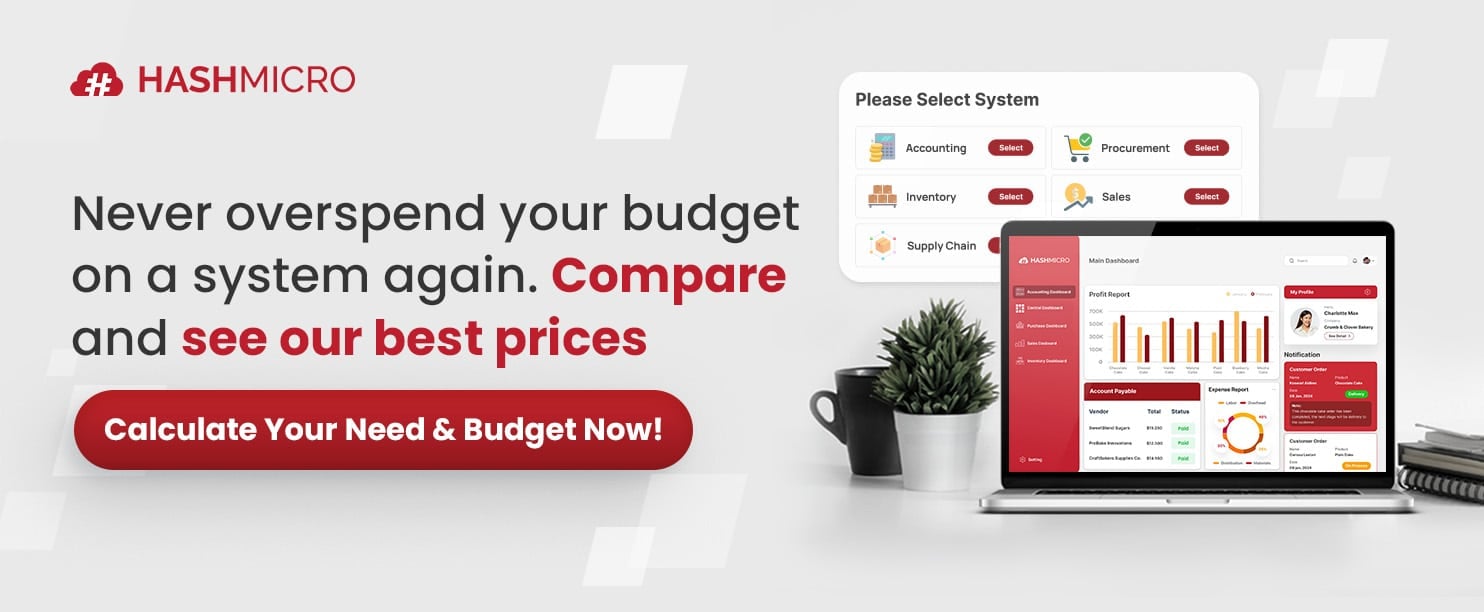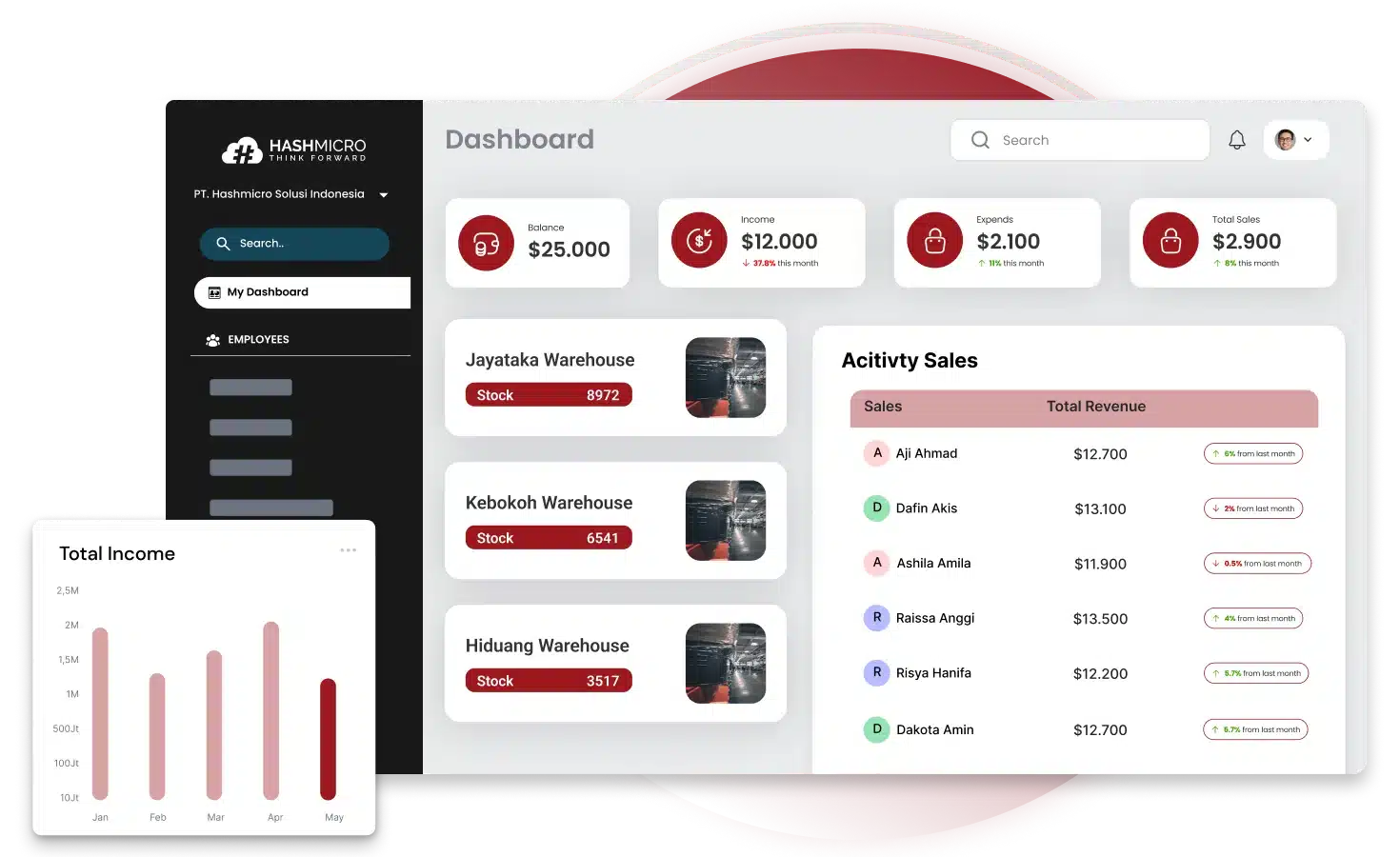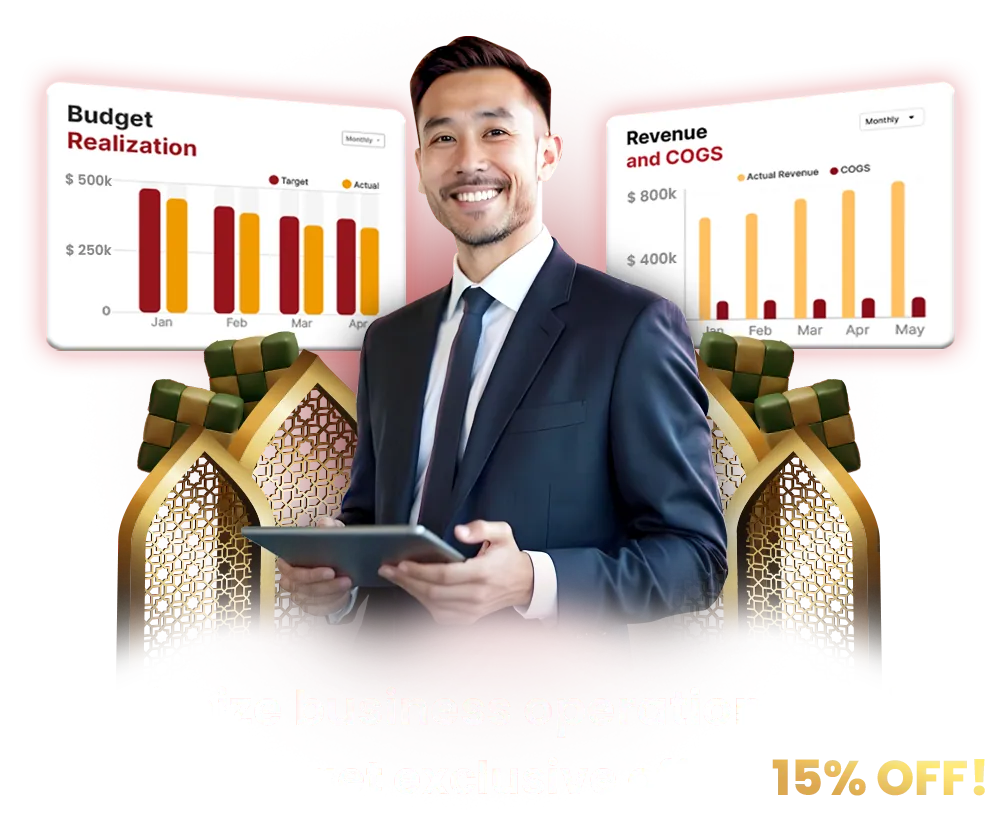Two crucial tools assist companies in improving operations: ERP and MRP. ERP (Enterprise Resource Planning) and MRP (Material Requirements Planning) are critical technologies that help businesses maintain control over their operations. Having the right instruments is essential to a company’s efficient operation.
ERP addresses various business operations, from supply chain management to finance, whereas MRP concentrates on managing the manufacturing process. From this definition, the crucial question is which system best suits your company’s demands.
Continue reading this article as we explore and assist you in selecting the best option to accelerate your business and boost productivity; in this article, we will examine the key differences, attributes, and advantages of ERP and MRP.
Key Takeaways
|
Table of Content
Content Lists
What is an MRP System?
Material Requirements Planning, or MRP, is a dynamic software program that assists companies in streamlining and optimizing their production procedures. In the ERP vs. MRP systems argument, MRP controls and simplifies the manufacturing process, ensuring that raw materials are available when production needs them.
Utilizing MRP software can reduce waste, prevent expensive production delays, and improve operational management. As a result, businesses function more effectively, increasing overall performance and productivity.
MRP ensures seamless and effective manufacturing by automating production scheduling and inventory management. Let’s examine MRP’s operation and how it could transform industrial processes:
1. Optimizing inventory and production scheduling
MRP systems are essential for controlling production schedules and raw materials. By monitoring current inventory levels and projecting material demands, MRP guarantees that companies always have the appropriate materials without overstocking.
It helps businesses to efficiently organize their production schedules, minimizing waste and coordinating material availability with deadlines. This increases overall efficiency by reducing expenses and maintaining uninterrupted output.
2. Strengthening supply chain and order management
Because MRP guarantees on-time material deliveries, it also improves supply chain management. When inventory is low, the system automatically places orders, monitors delivery status, and modifies production schedules in response to material availability.
MRP integrates real-time data with suppliers to assist companies in preventing delays, preserving solid supplier relationships, and guaranteeing seamless operations throughout the production process.
Additionally, demand forecasting, inventory control, and the development of effective production plans are how MRP operates. As a result, the manufacturing process is streamlined from beginning to end, expenses are decreased, and operational efficiency is increased.
Key Features and Benefits of MRP
Systems for Material Requirements Planning (MRP) assist companies in better managing their production and materials. Key features of MRP systems include the following:
- Bill of Materials (BOM): MRP generates a detailed list of all components and raw materials required to produce a final product and the quantity of each item needed.
- Inventory control: MRP forecasts future demand while monitoring present supplies. Businesses can avoid running out of supplies or having too much inventory by using it to determine how much material is needed and when to place new orders.
- Production planning: This capability helps with production work scheduling and coordination. MRP ensures that labor, equipment, and resources are employed effectively to meet demand while minimizing expenses.
- Demand forecasting: MRP forecasts future product demand by examining market trends and historical sales data. These projections facilitate production scheduling and material planning.
The following are important benefits of utilizing an MRP system in addition to its primary features:
- Efficient inventory management: MRP assists companies in maintaining the proper level of inventory. This avoids production delays, reduces excess stock, decreases storage expenses, and guarantees that resources will be available when needed. Efficient inventory management also contributes to ESG reporting by promoting sustainability through waste reduction and resource optimization.
- Increased labor productivity: Production teams can efficiently organize their work because MRP gives them immediate information regarding material requirements. This boosts overall production and cuts down on time spent looking for goods.
- Improved production planning: MRP analyzes schedules and materials to improve production planning. It assists in determining what is required and when, enabling companies to address possible problems before they become serious.
- Enhanced customer satisfaction: MRP assists companies in swiftly fulfilling client orders by guaranteeing that supplies are accessible and production proceeds according to plan. As a result, customers are happier and more loyal.
What is an ERP System?
Enterprise Resource Planning, or ERP, is a sophisticated software program designed to help businesses manage their operations efficiently. This system integrates sales, finance, inventory, production, and supply chain management into one platform.
Based on real ERP implementation experiences, around two-thirds (67%) of organizations consider their ERP implementation to be either “highly successful” or “successful,” while a mere 2% label their ERP projects as “not very successful.”
ERP systems combine these functions to give users real-time insight into business operations, facilitating decision-making and improving overall operational effectiveness. Understanding ERP’s workings is essential to maximizing its advantages. The following are an ERP software main functions:
-
Integration of business processes
ERP systems facilitate seamless data flow throughout the company by connecting various departments and operations. This integration creates a more cohesive operating framework by lowering errors and encouraging teamwork.
-
Real-time data management
Thanks to ERP’s instant insights into their operations, businesses can track important performance metrics and make well-informed decisions immediately. This responsiveness helps companies effectively meet client needs and adjust to changes in the market.
-
Automation of tasks
Thanks to ERP’s instant insights into their operations, businesses can track important performance metrics and make well-informed decisions immediately. This responsiveness helps companies effectively meet client needs and adjust to changes in the market.
-
Enhanced reporting and analytics
ERP systems include advanced reporting capabilities that provide insightful information on various business topics. Users can create custom reports to assess performance, predict trends, and identify areas for development.
-
Improved customer relationship management
ERP systems improve customer interactions by combining data from sales and customer support. Since businesses can answer questions faster and complete purchases more effectively, customers are happier and more loyal.
What are The Key Features and Benefits of ERP?

ERP (Enterprise Resource Planning) solutions give companies an integrated platform that combines several tasks, increasing productivity and teamwork. The following are the key features of ERP systems:
1. Modular design
Accounting, manufacturing, human resource management (HRM), and procurement are just a few of the components that make up ERP systems. Because of their versatility, companies can tailor the system to meet their requirements.
2. Scalability and flexibility
ERP systems are designed to expand with companies. Because of their scalability, ERP systems can help businesses add or modify modules and features as their needs develop and change.
3. Reporting and analytics
ERP systems offer advanced reporting and analytics features that allow companies to create unique reports, dashboards, and key performance indicators (KPIs). This capability offers actionable information, allowing businesses to monitor performance and make data-driven decisions.
4. Customer relationship management (CRM)
Often include CRM features that manage sales leads, automate marketing efforts, and enhance customer service. This integration provides a comprehensive picture of consumer interactions and makes personalized marketing initiatives possible.
5. Human resource management (HRM)
Many ERP systems have HRM modules to streamline various HR tasks, including payroll, performance management, training, and personnel records. This guarantees compliance with labor laws, streamlines HR procedures, and improves employee engagement.
6.Cross-application communication
ERP solutions hosted in the cloud allow for smooth application connectivity. This online connection will enable data exchange efficiently, giving companies a complete update on their activities.
After reading the key features, you might also wish to take note of the following benefits related to having an ERP system in place:
- Cost savings: Using ERP systems for automation and integration enhances production and efficiency while saving substantial money.
- Improved compliance management: Assist companies in efficiently managing and monitoring adherence to regulatory standards.
- Reduced human error: ERP systems minimise the possibility of human error by automating procedures, enabling effective use of resources.
- Enhanced collaboration: This feature encourages improved departmental cooperation and communication, creating a more unified workplace. It is also present in the HashMicro Two-Tier ERP system, which gives companies a thorough foundation for combining several features, which increases productivity and teamwork.
- Scalable growth: Support sustainable growth by adjusting to the changing needs of businesses as they grow.
- Better supplier and partner management: Offer inventory and procurement management insight, strengthening relationships with partners and suppliers.
ERP systems are effective tools for companies looking to increase productivity and boost expansion. These solutions give businesses crucial advantages by providing scalability, enhanced collaboration, and better supplier management.
Whether you want to enhance efficiency or strengthen partnerships, ERP systems can help you achieve your goals. To discover how ERP systems can help improve your business operation, check our price scheme for valuable insights.

The Differences Between ERP vs MRP Systems
The differences between ERP vs MRP meaning the scope, target users, integration capabilities, and prices of Material Requirements Planning (MRP) and Enterprise Resource Planning (ERP) differ greatly, even though they are useful tools for resource management and process optimization.
Companies seeking to implement the best solution to suit their unique requirements must be aware of these differences:
1. Scope differences
The scope of enterprise planning vs manufacturing planning is where they differ most. MRP focuses on production planning and inventory management, offering resources to efficiently manage production schedules and monitor inventory levels.
Conversely, ERP provides the full package by combining several corporate operations, such as finance, human resources, and customer relationship management, onto a single platform. Thanks to this wider scope, businesses can easily handle numerous aspects of their operations.
2. Users
ERP and MRP systems serve various user categories within a business. ERP serves a wider range of tasks across all departments, whereas MRP is mostly utilized by manufacturing and production staff, including procurement teams, inventory managers, and production planners.
These users use MRP to optimize their production procedures. On the other hand, ERP systems cater to a larger audience in several areas, such as human resources, marketing, finance, and sales. ERP offers role-based access, which enables various individuals to access pertinent data based on their duties.
3. Integration capabilities
Integration capabilities refer to a system’s ability to communicate and exchange information with other systems, both inside and outside. Typically, MRP interfaces with manufacturing environment systems like procurement software and inventory control.
On the other hand, ERP systems are recognized for their wide integration capabilities. These capabilities allow them to easily interface with various internal and external systems, such as finance and HR. This integration increases collaboration and efficiency and promotes a seamless data flow between departments.
4. Cost of ERP vs MRP software
Another important consideration when comparing ERP and MRP systems is cost. MRP systems are typically less costly, which makes them appropriate for companies with specific requirements and financial limitations.
ERP systems, on the other hand, are frequently more expensive because of their complexity and customization requirements. However, despite the larger initial expenditure, ERP can result in significant long-term savings and increased organizational efficiency.
HashMicro as the Best Solution for Your ERP Software Needs

HashMicro offers a complete ERP software solution to assist businesses in managing operations more precisely and efficiently. One important aspect is the smooth integration of all business divisions, which guarantees real-time data synchronization and streamlines business procedures at all organizational levels.
Some of the primary features of HashMicro’s ERP software are listed below:
-
Built-in Business Intelligence (BI)
Pivot, KPI Scorecard, and Dashboard Ninja are comprehensive BI tools that give companies real-time data for better decision-making. These tools allow users to visualize important indicators quickly, supporting data-driven strategies and increasing productivity.
-
Sheet management
A well-organized sheet management system would help companies track and manage data more easily. It would also improve teamwork and guarantee instant access to reliable data for all departments.
-
Fast stock opname
Automated inventory checks ensure more accurate results by reducing errors and speeding up updates and stock-taking. By offering real-time stock visibility, businesses can manage ideal inventory levels and avoid problems like stockouts and overstocking.
-
Smart transaction bookkeeping
Automated bookkeeping lowers errors and maintains updated financial records by reducing the need for manual data entry. This enhances financial data control and streamlines decision-making, compliance, and budgeting procedures.
-
Real-time reporting
With instant access to updated company reports, companies can monitor performance in real-time. Accurate analytics can help businesses stay competitive and make quick adjustments.
These attributes improve decision-making, lower risks, and increase operational visibility. With HashMicro’s ERP software, businesses may increase corporate agility, support long-term growth, and maximize business efficiency.
Conclusion
In Malaysia’s dynamic business environment, businesses always look for methods to improve productivity and streamline processes. ERP systems for corporate and subsidiary operations allow companies to improve decision-making and streamline processes.
An ERP solution from HashMicro ERP Software helps companies become more competitive, run more efficiently, and grow over the long run. HashMicro assures that your company is prepared for both present and future success. Are you prepared to change your company? Get a free demo of HashMicro ERP Software now to see how our product can boost productivity and boost expansion.

FAQ about ERP vs MRP
-
What is ERP vs CRM vs MRP?
ERP improves business efficiency, CRM improves customer relationships, DMS improves document management, and MRP improves manufacturing processes.
-
What is an MRP system?
Material Requirements Planning (MRP) is a standard supply planning system to help businesses, primarily product-based manufacturers, understand inventory requirements while balancing supply and demand.
-
What are the advantages of an ERP system over the legacy MRP system?
Unlike MRP, ERP solutions are integrated systems with a common database, a common user interface, real-time operational capabilities, and support for connecting third-party applications and components.































